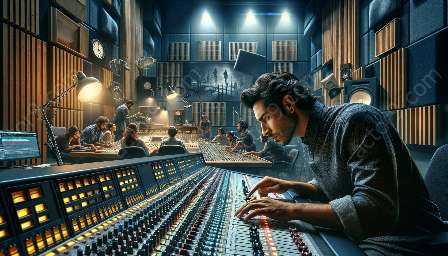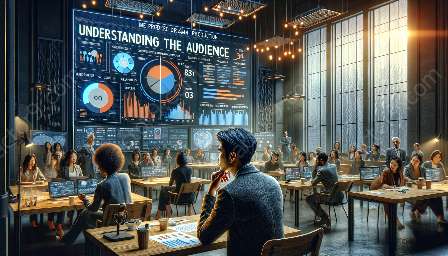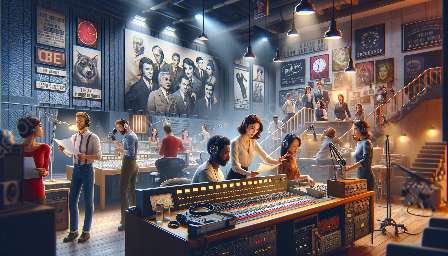Radio drama production is a unique and captivating form of performing art that relies heavily on its audience. Understanding the audience's preferences and expectations is essential for creating compelling and engaging content that resonates with listeners.
Understanding the Role of Audience in Radio Drama Production
Radio drama production, as a form of performing arts, revolves around the concept of storytelling through sound. Unlike other performing arts such as acting and theater, radio drama relies solely on the auditory senses of its audience. This places a significant emphasis on the role of the audience in the overall production process.
One of the key elements of understanding the audience in radio drama production is recognizing the power of sound to evoke emotions and create vivid imagery in the minds of the listeners. Unlike visual mediums such as theater, radio drama relies on the audience's imagination to bring the storyline to life. This makes it crucial for creators to tailor their content to the specific preferences and expectations of their target audience.
Researching the Target Audience
Before embarking on the production of a radio drama, it is essential to conduct thorough research on the target audience. This includes understanding their demographics, interests, and listening habits. By gaining insights into the preferences of the target audience, creators can tailor their content to resonate with their listeners on a deeper level.
Research can involve surveys, interviews, and the analysis of audience data. By actively engaging with the prospective audience, creators can gain valuable feedback that informs the development of characters, storylines, and sound design.
Creating Engaging and Relevant Content
Once the target audience has been thoroughly researched, the next step in radio drama production is to create content that is engaging and relevant to the listeners. This involves weaving narratives and characters that are relatable and captivating to the intended audience.
Storylines should be developed with the audience's preferences in mind, catering to their interests and providing content that resonates with their emotions and experiences. By addressing themes and topics that are relevant to the target audience, creators can establish a strong connection and engage listeners on a profound level.
Utilizing Soundscapes and Audio Techniques
Sound plays a pivotal role in radio drama production, serving as the primary medium through which the story is conveyed. Understanding the audience's auditory preferences and sensitivities is crucial for creating immersive soundscapes that resonate with the listeners.
Utilizing audio techniques such as binaural recording, spatial audio, and sound effects enhances the immersive experience for the audience, allowing them to be transported into the world of the storyline. By catering to the audience's auditory preferences, creators can evoke emotions and create a sense of presence that strengthens the connection between the audience and the production.
Engagement and Feedback
Once the radio drama is aired, the engagement and feedback from the audience play a vital role in shaping future productions. Monitoring audience responses, gathering feedback, and analyzing listener engagement provides valuable insights that can be used to refine future content and improve the overall production process.
Platforms such as social media, online forums, and listener surveys offer avenues for creators to directly engage with their audience and understand their reactions to the content. This interaction fosters a sense of community and allows creators to adapt their approach to better meet the preferences of their audience.
Connecting Radio Drama Production with Performing Arts
Understanding the audience in radio drama production aligns closely with the principles of performing arts, particularly acting and theater. The emphasis on narrative, character development, and emotional engagement parallels the core elements of acting and theater, albeit in a purely auditory form.
Radio drama production offers a unique platform for actors to showcase their talent and connect with the audience through the power of their voices. Just as in traditional theater, the nuances of vocal performance and emotional expression are essential in captivating the audience and conveying the depth of the characters and storyline.
Conclusion
Understanding the audience in radio drama production is a multifaceted process that requires in-depth research, creative insight, and a deep understanding of the power of sound in storytelling. By aligning the content with the preferences and expectations of the audience, creators can cultivate a strong connection that immerses listeners in the world of the production. This connection not only enhances the overall experience but also fosters a sense of community and engagement that is fundamental to the enduring appeal of radio drama as a form of performing arts.






















